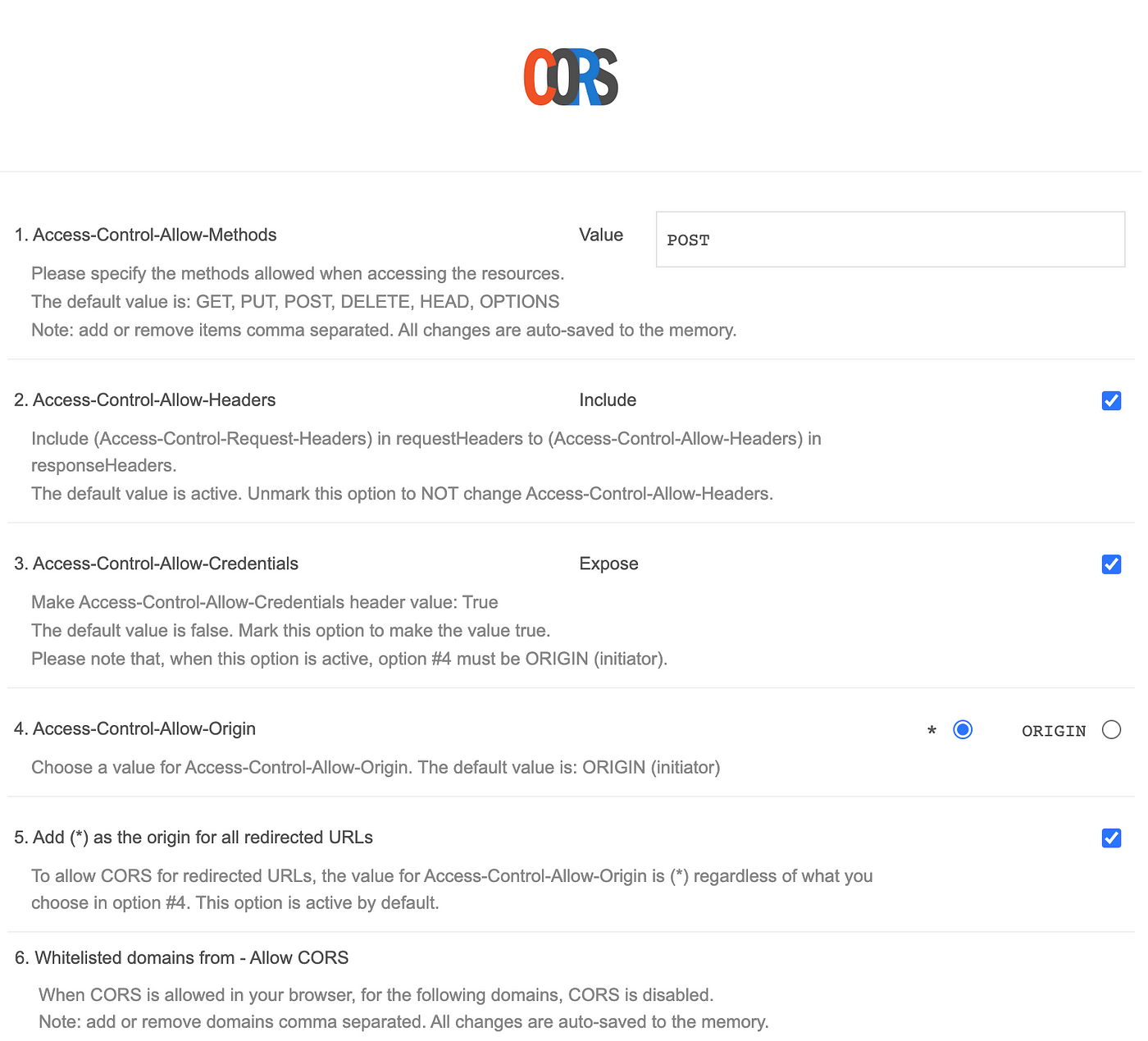

In the same amount of steps (two), you can adopt a more manageable configuration.
#MAC OS X APACHE CORS ENABLE MAC OS#
A Cleaner Configurationīefore I being, I assume you already installed and configured Apache on Mac OS X.įirst, open the Terminal app and switch to the root user to avoid permission issues while running these commands. Furthermore, Apache configurations often get reset when upgrading Mac OS X. To do that, you need to configure virtual hosts. Primarily, we would rather access the site using a name like somesite.local. You could mimic multiple sites by creating subdirectories and access a site at localhost/somesite. This is essentially a single site configuration.
#MAC OS X APACHE CORS ENABLE MAC OS X#
The term Virtual Host refers to the practice of running more than one web site on a single machine.īy default, the Apache configuration on Mac OS X serves files from /Library/WebServer/Documents accessed by the name locahost. What are Virtual Hosts?įrom the Apache Virtual Host documentation: Furthermore, Apache configurations often get reset when upgrading Mac OS X. To mountaindogmedia's point, this becomes difficult to manage. Over the years, I have created many virtual hosts. Install superset pip install apache-superset Initialize the database superset db upgrade Create an admin user (you will be prompted to set a username, first and last name before setting a password) export FLASKAPPsuperset superset fab create-admin Load some data to play with superset loadexamples Create default roles and permissions superset init To start a development web. You need to edit the Apache configuration to include this file and enable virtual hosts. In fact, this is the default configuration for many servers.īy default, the Apache Virtual Host configuration on Mac OS X is located in a single file: /etc/apache2/extra/nf. Indeed, mountaindogmedia, this is an easier way. I think it would be easier to manage host files and changes. Jason, have you tried a modified Include statement for virtual hosts to map a directory? So instead of /etc/apache2/extra/nf as indicated, one would use /etc/apache2/extra/vhosts/*.conf and then just create a nf for the first virtual host, and then add/edit/delete vhost files as needed. Mountaindogmedia left the following comment on my post for installing Apache, PHP, and MySQL on Mac OS X:


 0 kommentar(er)
0 kommentar(er)
